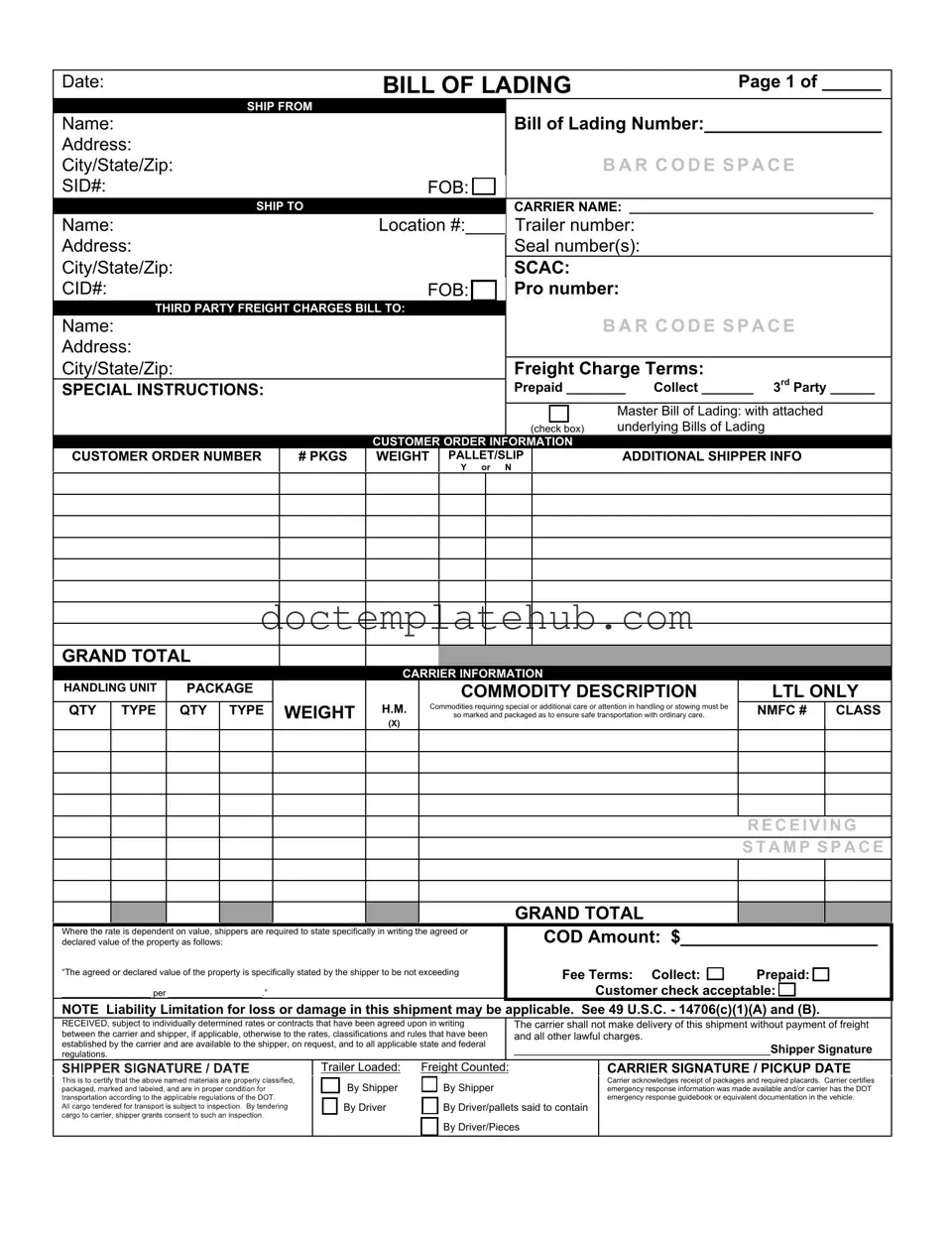What is a Bill of Lading?
A Bill of Lading (BOL) is a legal document between a shipper and a carrier. It serves as a receipt for the goods being transported and outlines the terms of the shipment. The BOL provides essential details such as the type of goods, their quantity, and the destination. It plays a crucial role in the shipping process, ensuring that all parties understand their responsibilities and obligations.
What is the purpose of the Supplement form?
The Supplement form is used to provide additional information or modifications to the original Bill of Lading. This may include changes in the shipment details, such as the consignee’s address or specific handling instructions. By using this form, parties can ensure that all relevant information is accurately documented, reducing the risk of misunderstandings during transit.
Who needs to fill out the Bill of Lading with a Supplement form?
Typically, the shipper or the freight forwarder is responsible for completing the Bill of Lading and the Supplement form. However, the consignee may also need to provide input, especially if there are changes to the original shipment details. It is essential for all parties involved to review the forms for accuracy to avoid potential disputes.
What information is required on the Bill of Lading with a Supplement form?
The form generally requires details such as the names and addresses of the shipper and consignee, a description of the goods, the weight and dimensions, shipping instructions, and any special handling requirements. The Supplement form may ask for additional information that clarifies or updates the original BOL.
How does the Bill of Lading with a Supplement form affect liability?
The Bill of Lading serves as evidence of the contract between the shipper and the carrier. It outlines the carrier’s liability for the goods during transit. When a Supplement form is used, it can modify the terms of liability, so it’s essential to ensure that any changes are clearly documented. This helps protect the interests of all parties involved.
Can a Bill of Lading with a Supplement form be amended after it has been issued?
Yes, a Bill of Lading can be amended, but it typically requires the issuance of a Supplement form. This form should clearly indicate the changes being made. All parties must agree to the amendments, and it’s advisable to keep a record of both the original BOL and the Supplement for reference.
What should I do if I lose the Bill of Lading with a Supplement form?
If you lose the Bill of Lading, it is crucial to act quickly. Contact the carrier immediately to report the loss. They may require you to complete a lost Bill of Lading affidavit. Depending on the carrier’s policies, you may be able to obtain a replacement document, but this process can vary.
Is the Bill of Lading with a Supplement form legally binding?
Yes, the Bill of Lading and the Supplement form are legally binding documents. They establish the terms of the shipping contract and outline the rights and responsibilities of all parties involved. It is important to ensure that all information is accurate and agreed upon, as discrepancies can lead to legal disputes.
